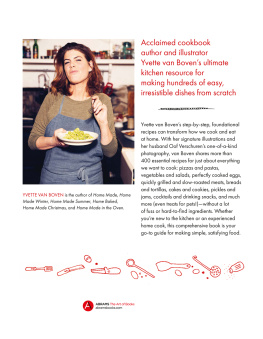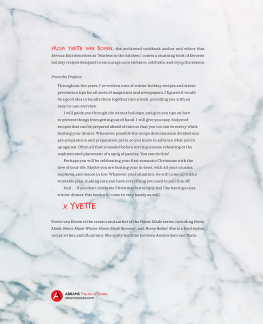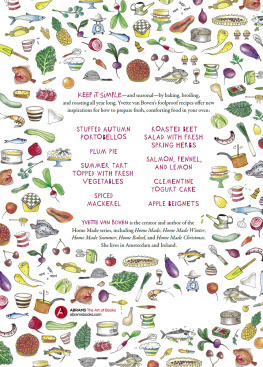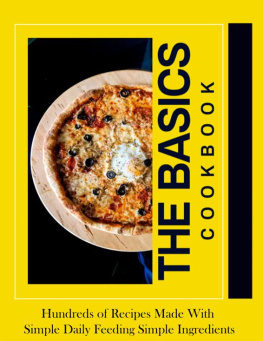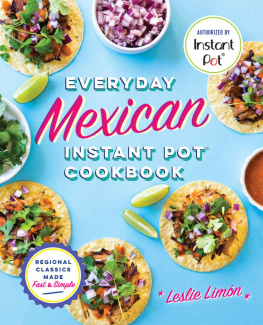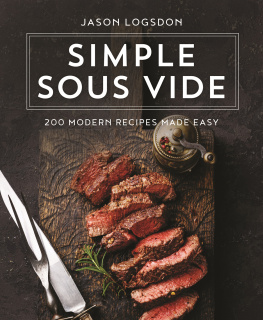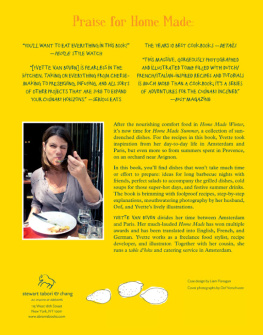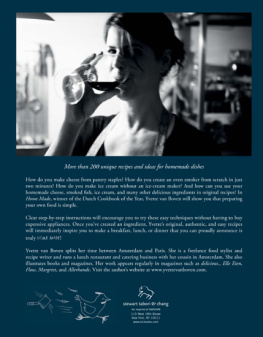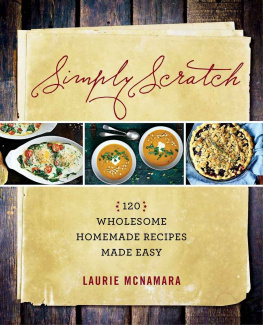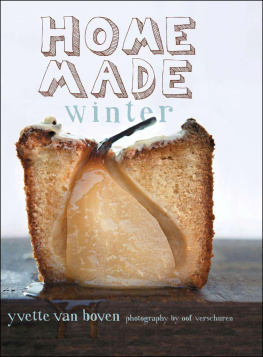Contents
Guide
Page List
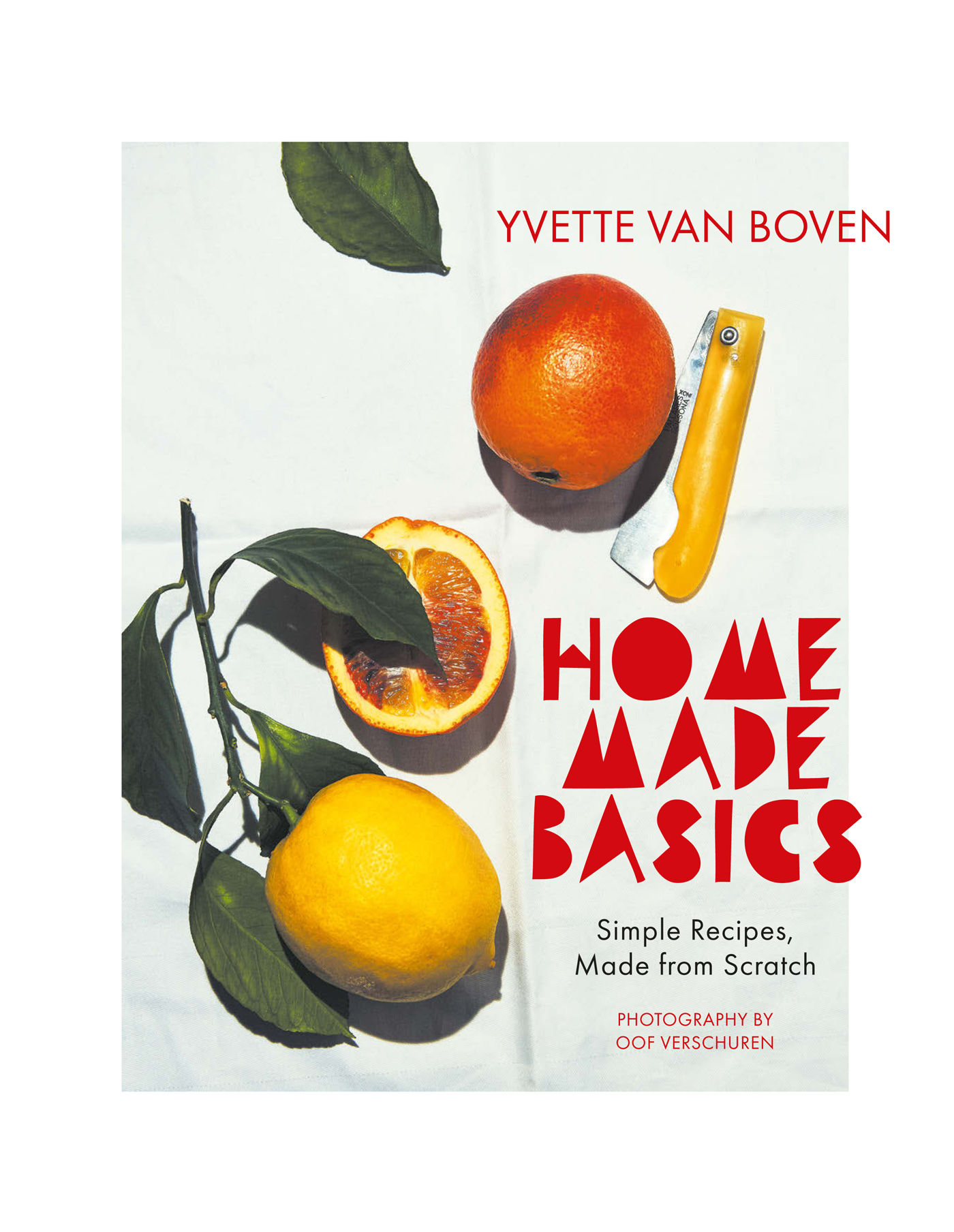
FOR OMAR


CONTENTS
INTRODUCTION
I began to help out in the kitchen and around the house from a very young age. My mother thought it was important that we kids knew how dangerous appliances could be, so we wouldnt try to use them without her permission and get hurt in the process. So, at four I had already learned how to sew on a sewing machine: my mother gently pushing the pedal, me holding the fabric underneath the needle. I found out how the lawn mower worked by helping to push it across our large Irish garden, and, whenever it got jammed, by carefully removing tough branches or wads of wet leaves from in between the sharp blades. I learned to always grab the hedge trimmer by its handles, with both hands.
And I learned how the stove worked.
Soon, I stood on a chair next to my mother at the kitchen counter, jotting down her every move. When I didnt know how to write the words, I drew them: a pan, a spoon, a whisk, sketching arrows to indicate her actions. (I do pretty much the same thing today.)
I learned to roll meatballs, to make a stew, to bake cookies and soda bread and lasagna.
When my mother gave me a childrens cookbook with step-by-step instructions, I moved from picture to picture, from one step to the next. And thats how I still make my books: step by step. Nothing here is too complicated, because you cant cook something complex until youve mastered the basics.
This project began as a book aimed at a child like the little chef I once was. But I quickly realized that this should be a book for everyone who likes to cook, but who also feels a little intimidated in the kitchen from time to time.
And even experienced cooks need tried-and-true recipes like these in their arsenalfoundational and satisfying food that they can make without a lot of fuss.
I wrote Home Made Basics for anyone who wants to put a cozy meal on their dining table each day with methods that arent much more challenging than heating up some leftovers or assembling a few quality ingredients.
So remember: whatever your comfort level in the kitchen, all you have to do to make delicious food is to follow the instructions, step by step.
x Yvette

in the dunes near the beach in Inchydoney, West Cork
SOME INFO TO GET STARTED
YIELD
All recipes serve four, unless indicated otherwise.
PREPARATION TIME
Each recipe mentions a preparation time, which starts the moment the onions are chopped, the beans shelled, or any of the other ingredients listed are prepped. This preparation time might vary from cook to cook, depending on your skill level.
Dont forget to ALWAYS read the whole recipe first, so you wont encounter any surprises. In each recipe I also mention whether you should marinate for an hour ahead of time or if you should wait one day before you can dig in.
MEASUREMENTS
1 tablespoon = 15 ml
1 coffee (dessert) spoon = 7 ml
1 teaspoon = 5 ml
OVEN
I have a gas oven as well as an electric convection oven. I use both for testing.
I always give an average temperature in my recipes.
Puff pastry, for example, bakes at a high temperature: at least 400F (200C), but sometimes 425F (220C). On the other hand, a slow-roasted cut of Boston pork butt calls for a lower temperature, 300F (150C) anddepending on the weighta long time to cook, about 5 hours. Ovens vary in temperature, even those from the same brand. You can use my stated temperatures and baking times as reliable estimates, but make sure to adjust them to your own oven if necessary.
Always use an oven thermometer; they cost next to nothing and are easy to find. The only temperature you can trust is the one you measure yourself inside the oven. The dial on the front may indicate the desired temperature but not necessarily the actual temperature of your food. Always properly preheat the oven and carefully measure the temperature.
And because every oven is different, the indicated cooking times are approximations. Always check your dish or baked good around the stated cooking time to see whether its ready.
Once you really begin to get the hang of your oven, youll start using it more. I cook more than half of my dishes in it, often more than one dish at a time. That way I keep my hands free for doing other stuff in the meantime.
BROTH
I wont mention this in every recipe, but home made broth always tastes best. Simple dishes are greatly improved by the intense, full-bodied flavor of home-steeped broth. Bouillon cubes are an easy substitution (not everyone has the time to make broth from scratch!) but it isnt always the tastiest solution.
I use bouillon cubes sparingly and freeze my home made broths in small batches to use for different dishes. Besides, the smell of a pot of broth, gently simmering on the stove, is amazing!
My broths often give a chicken carcass and some leftover celery, carrots, and leeks from the produce drawer a second life. I give recipes for making broths in the Soup section ().
EGGS
I prefer to use medium eggs. Farmers market eggs can greatly vary in size. If you think your eggs are very small, use two instead of one. It can really make a difference in a recipe if there isnt enough egg in it.
MILK/DAIRY
Always opt for whole milk, yogurt, or heavy cream. The high fat content is where the flavor is. This is true for all dairy: more fat = more flavor. Just so you know.
BUTTER
I never use margarine. Yes, I know, butter is fat. But if you eat healthfully, a buttered slice of whole-wheat bread wont hurt.
OLIVE OIL
I always use delicious, good-quality olive oil. Extra-virgin, it usually says on the bottle. I use it for cooking as well as in salads and baked goods. I can taste the difference.
Unless explicitly stated otherwise, every recipe that calls for olive oil means: extra-virgin, of good quality.
MEAT
Everyone should decide for themselves what kind of meat they buy. But my motto is: eat meat less often, and if you choose to eat it, buy organic and grass-fed products whenever possible, sourced from animals that lived an honest life.
In this book I give you plenty of recipes for dishes without meat and in the others I suggest where you can leave it out. However, there is a short chapter with recipes in which meat or fowl takes center stage because I love those as well.
FISH
I eat fish more often than I eat meat. I try to stay away from farm-raised fish and to buy only seasonal, wild-caught fish. Each fish species has its own season in which it is at its best. At the fishmonger, always let yourself be guided by whats on offer instead of the recipe. Fish rarely arrives on demand; thats just how nature works.

